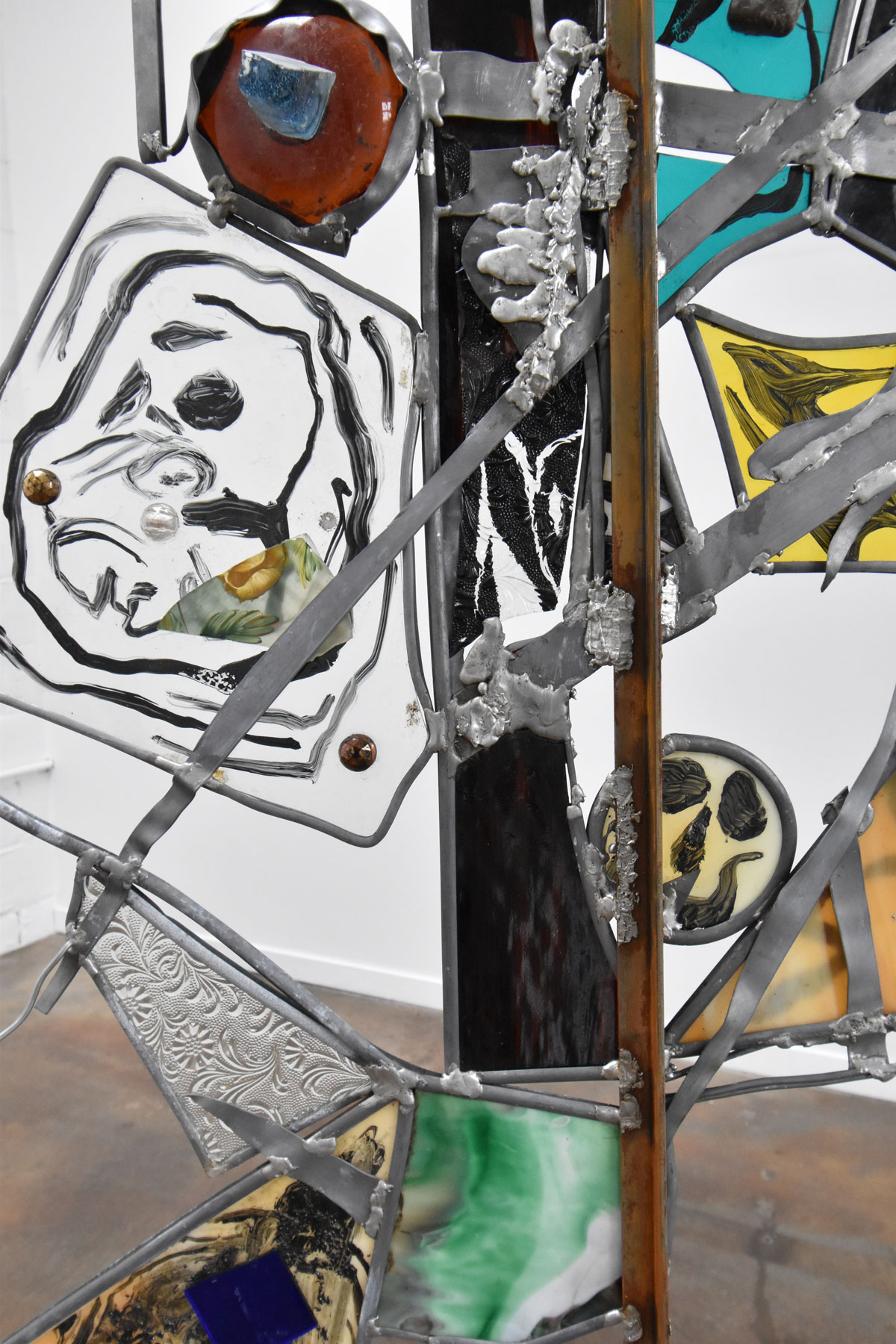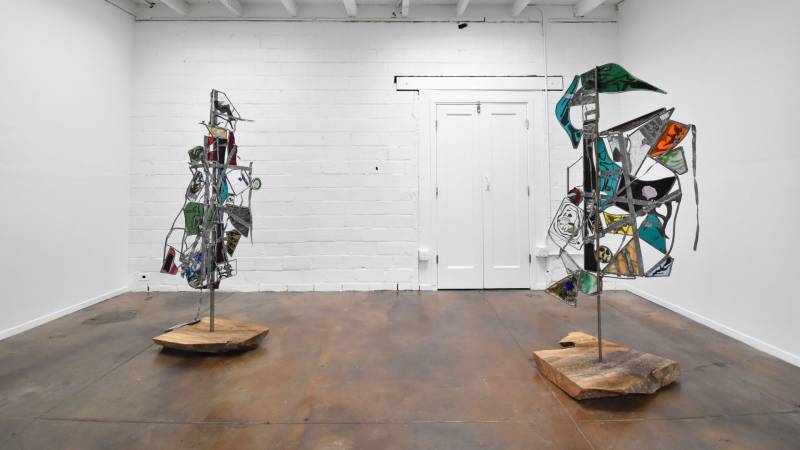In 2017, fire swept through Jeremy Ehling’s home, studio and experimental exhibition space in east Santa Rosa, destroying everything. Like so many North Bay residents displaced by the fires, Ehling and his partner found themselves in a situation few plan for: suddenly they had to start over, acclimate to a new home and rebuild a sense of comfort and security with donated things. Now, in a compelling coda to that story, Ehling is showing artwork made with the help of heat and fire.
Tissue, on view at Oakland’s Interface gallery, is a show of just two sculptures, both named after artist Jeremy Ehling’s former cats. That naming device speaks more to the personal nature of the work than its stature, since Aida Mio and Osiris are human-sized, both just around six feet tall. In that stat there’s more personal significance: this is also Ehling’s height.
Inside Interface’s snug floor plan, the sculptures, made of lead, glass, steel and oak, face each other from opposite sides of the all-white space (the gallery’s signature brick wall got a fresh coat of paint for Tissue). Despite their three-dimensionality, the sculptures have distinct fronts and backs, in part because the conglomerations of irregular, multicolored (and textured) glass shapes, ribbons of lead and solder are relatively flat in profile.
Supported by steel poles anchored in oak bases (from a tree on Ehling’s Forestville property), these sculptures borrow from the materials of a cathedral window to become something else entirely. Imagine abstract expressionist paintings made from the glass shards left behind in a stained glass conservation workshop. Another personal touch: Ehling worked in just such a place.

In person, Aida Mio and Osiris shapeshift, as do the multiple meanings of “tissue” (connective stuff or flimsy paper?). The sculptures look like wooden ships with patchy, translucent sails. They look like people lugging around their meager possessions. Or the bodily representation of past experiences.



